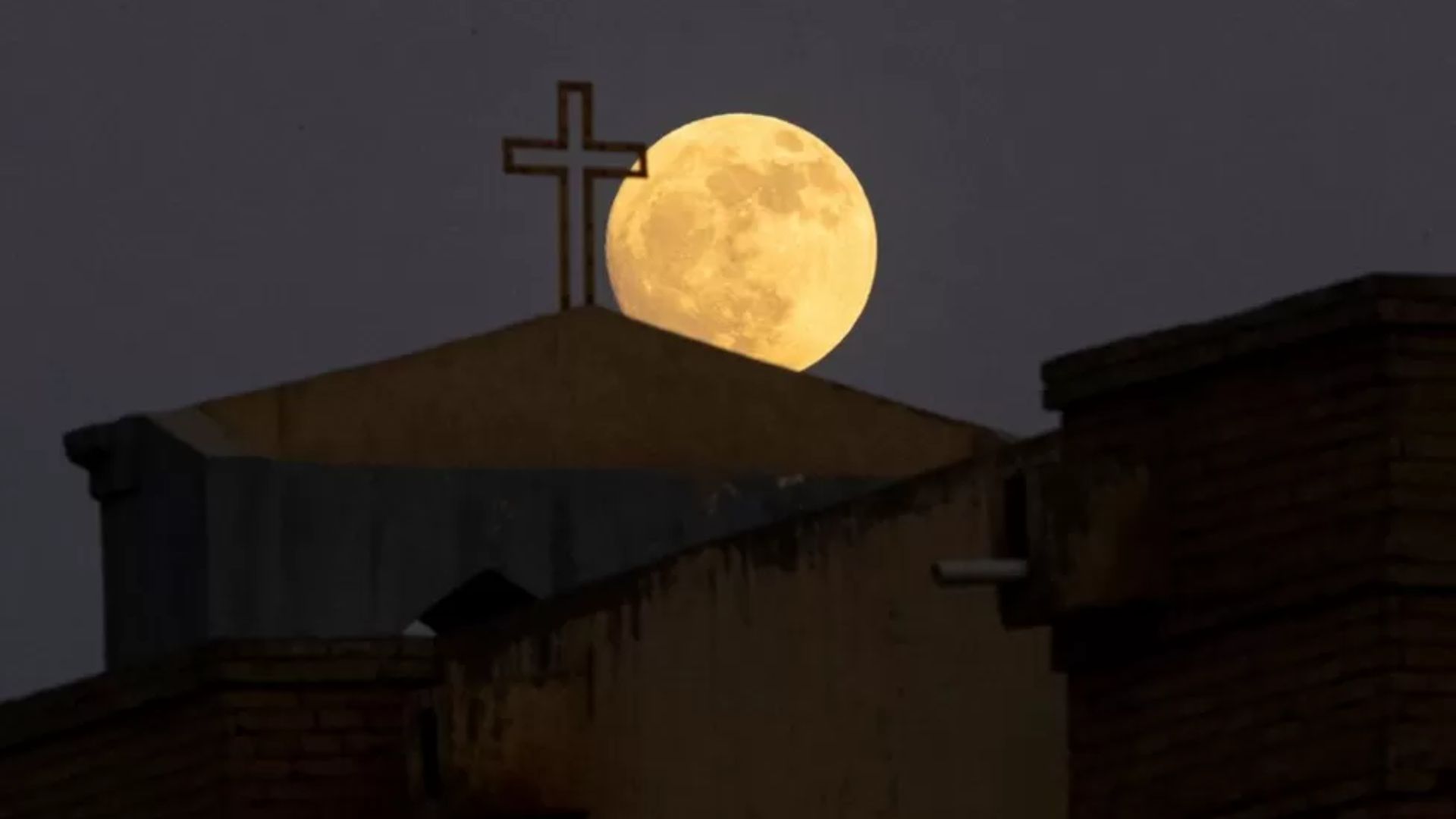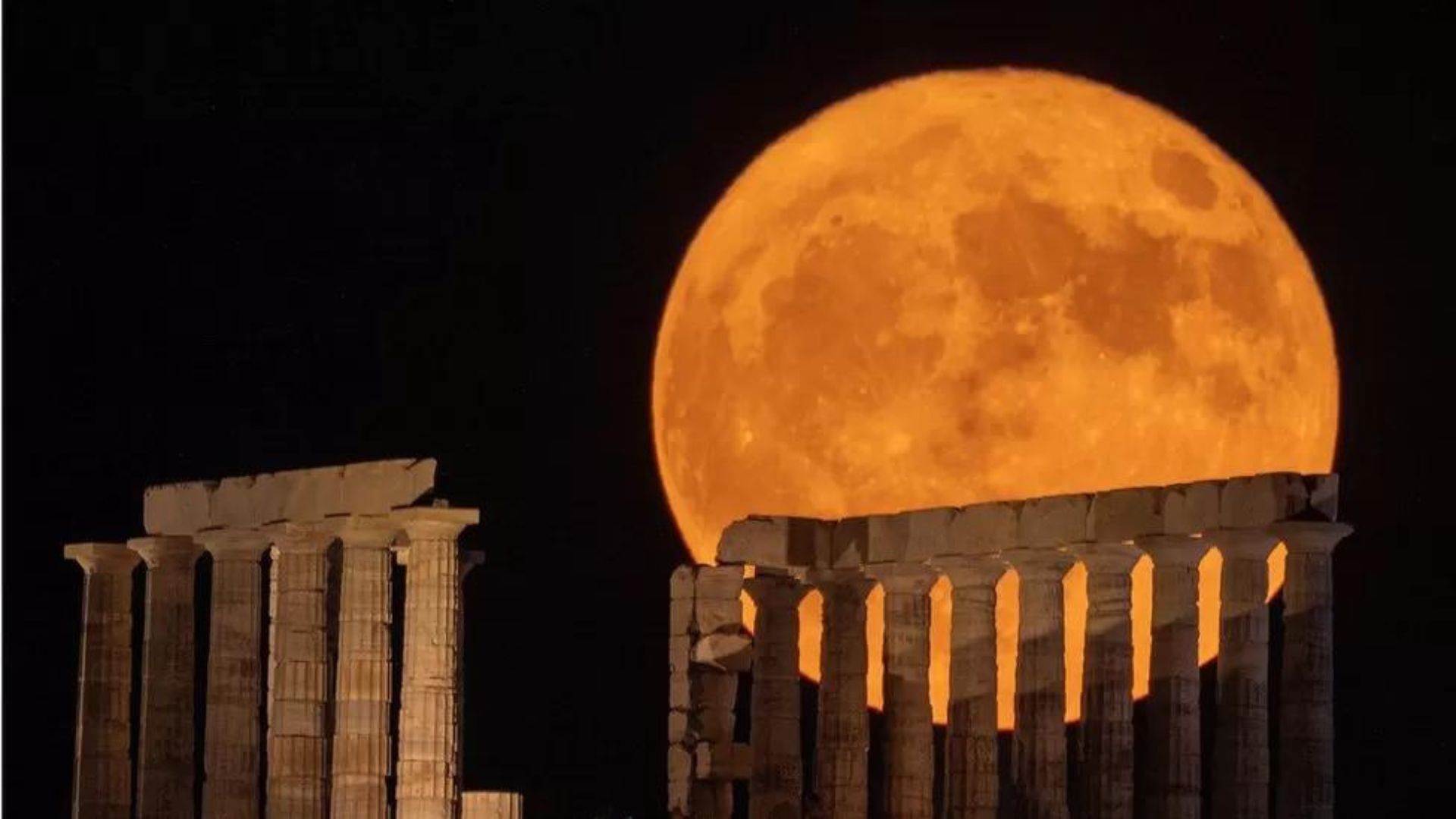The Moon has captivated stargazers as it shines brighter and appears larger than its usual self on Monday evening. According to NASA, July's supermoon will showcase its full brilliance for a remarkable period of up to three days.
Referred to as the Buck Moon, this extraordinary lunar event is attributed to its closer proximity to Earth during its orbit. The Moon's path around our planet is not a perfect circle, owing to the gravitational pull of Earth, resulting in an elliptical trajectory resembling an elongated circle or oval.
Consequently, throughout the Moon's 27.32-day journey, there are instances when it moves closer to or farther away from Earth.

The moon rose above the Virgin Mary Chaldean Cathedral in Iraq's Basra city - AP
The full Moon in July, known as the Buck Moon due to the active growth of male deer antlers during this time, marks a special celestial event called a supermoon. This phenomenon occurs when the Moon reaches its closest point to Earth in its orbit and aligns with the full Moon phase.
At 12:39 BST (07:39 Eastern Time) on Monday, the Moon reached its peak illumination, showcasing its brilliance in the night sky. As per the longstanding astronomical records of the Old Farmer's Almanac, the Buck Moon's orbit brought it even closer to Earth compared to previous full Moons this year.

The dark sky in Stockingford, Warwickshire, was illuminated by the orange tones of the Buck Moon - AP
According to the publication, the upcoming full Moon in August will be the sole supermoon that comes closest to Earth in the entirety of this year. They further shared a collection of photographs depicting the Buck Moon captured in various locations worldwide on Sunday and Monday.

The full moon rises above the Ancient Temple of Poseidon at Cape Sounion, in Sounion, Greece, on Monday - AP